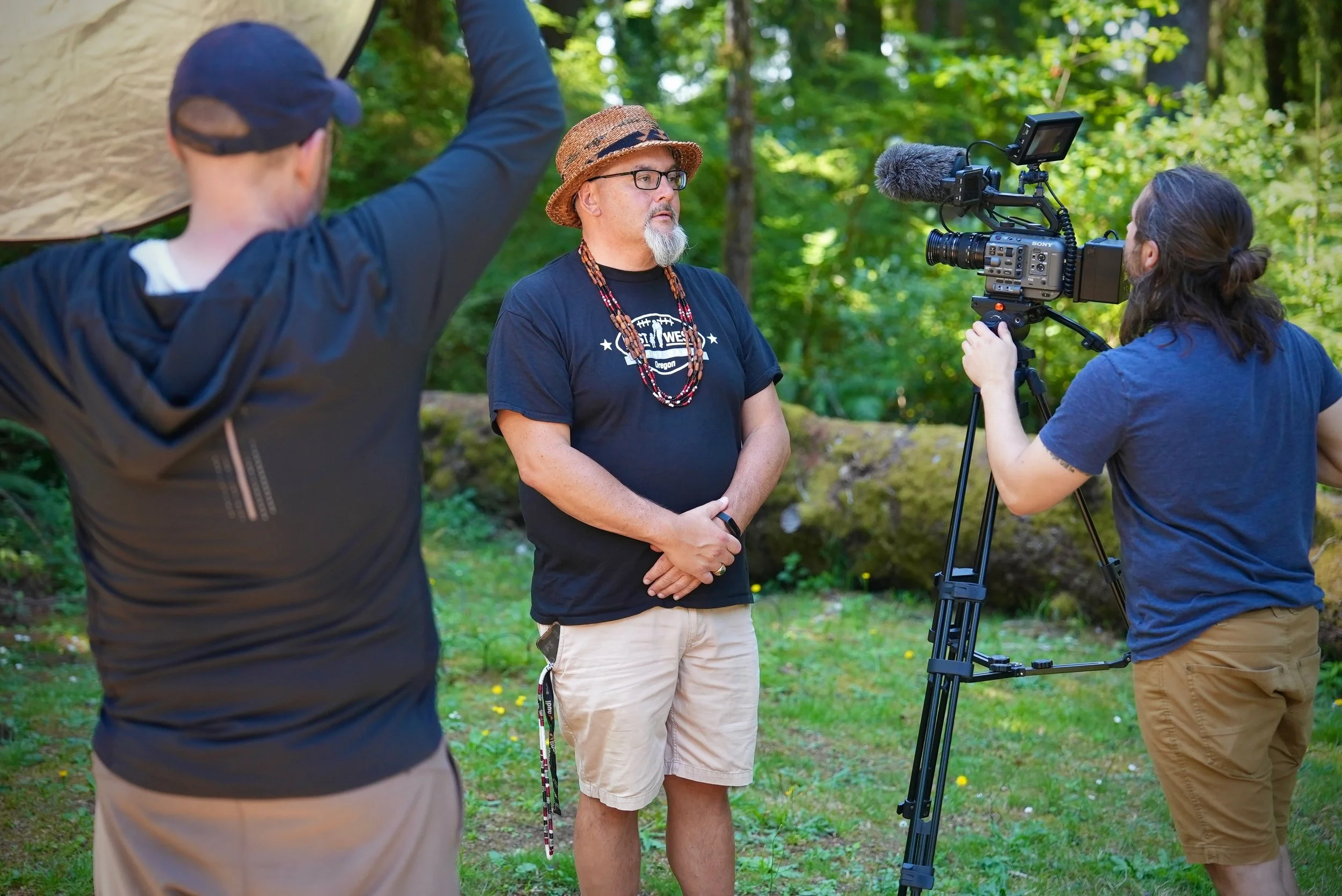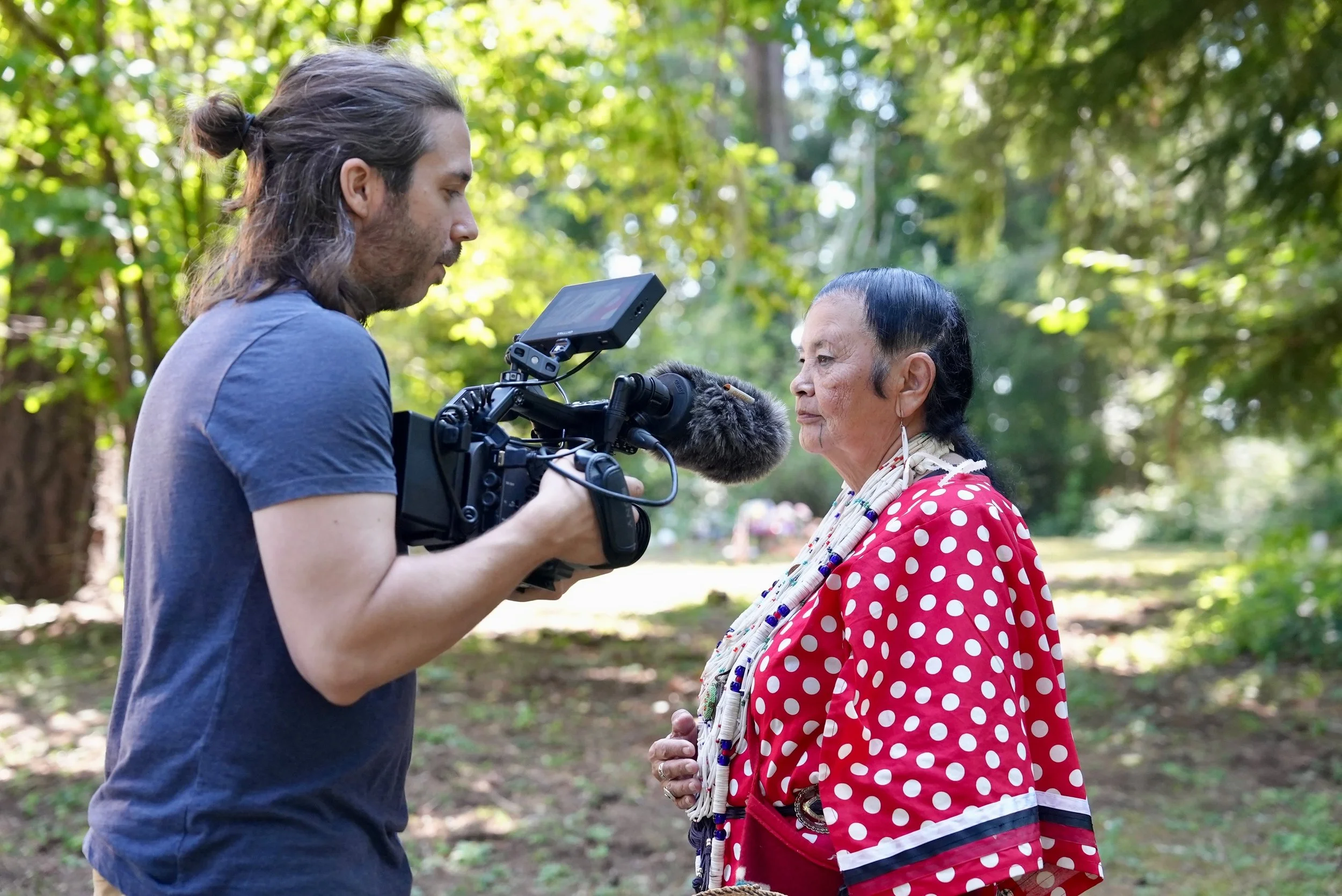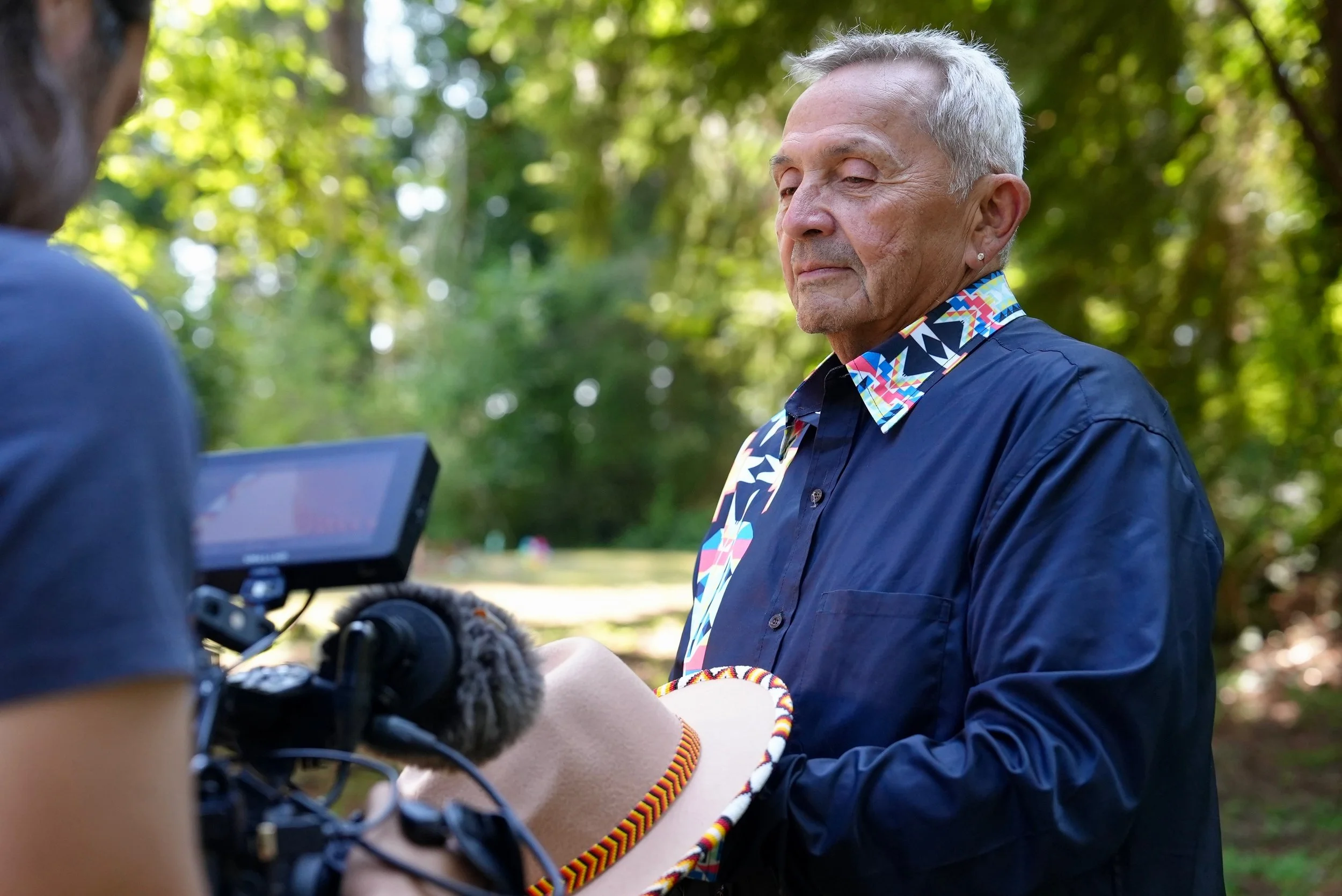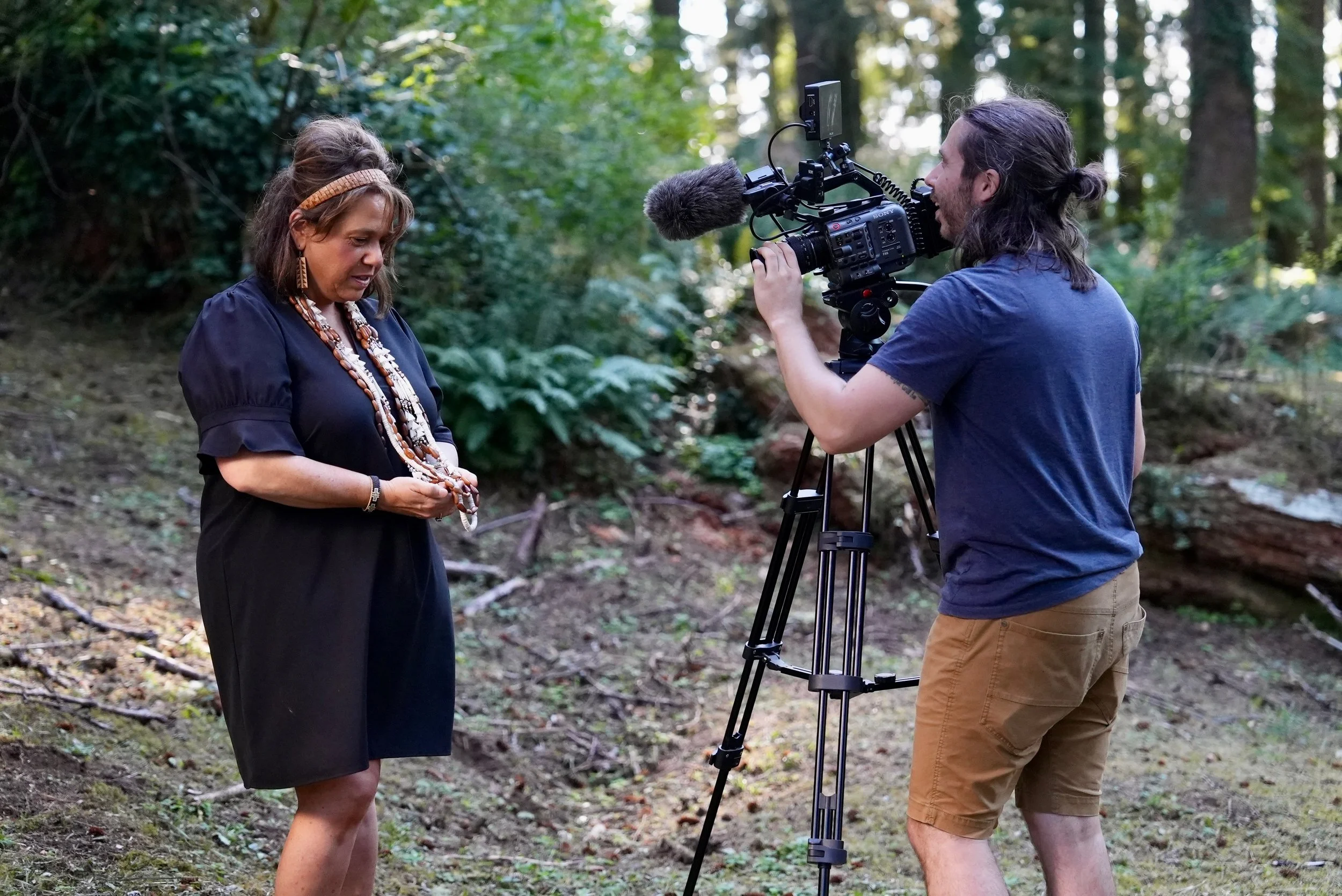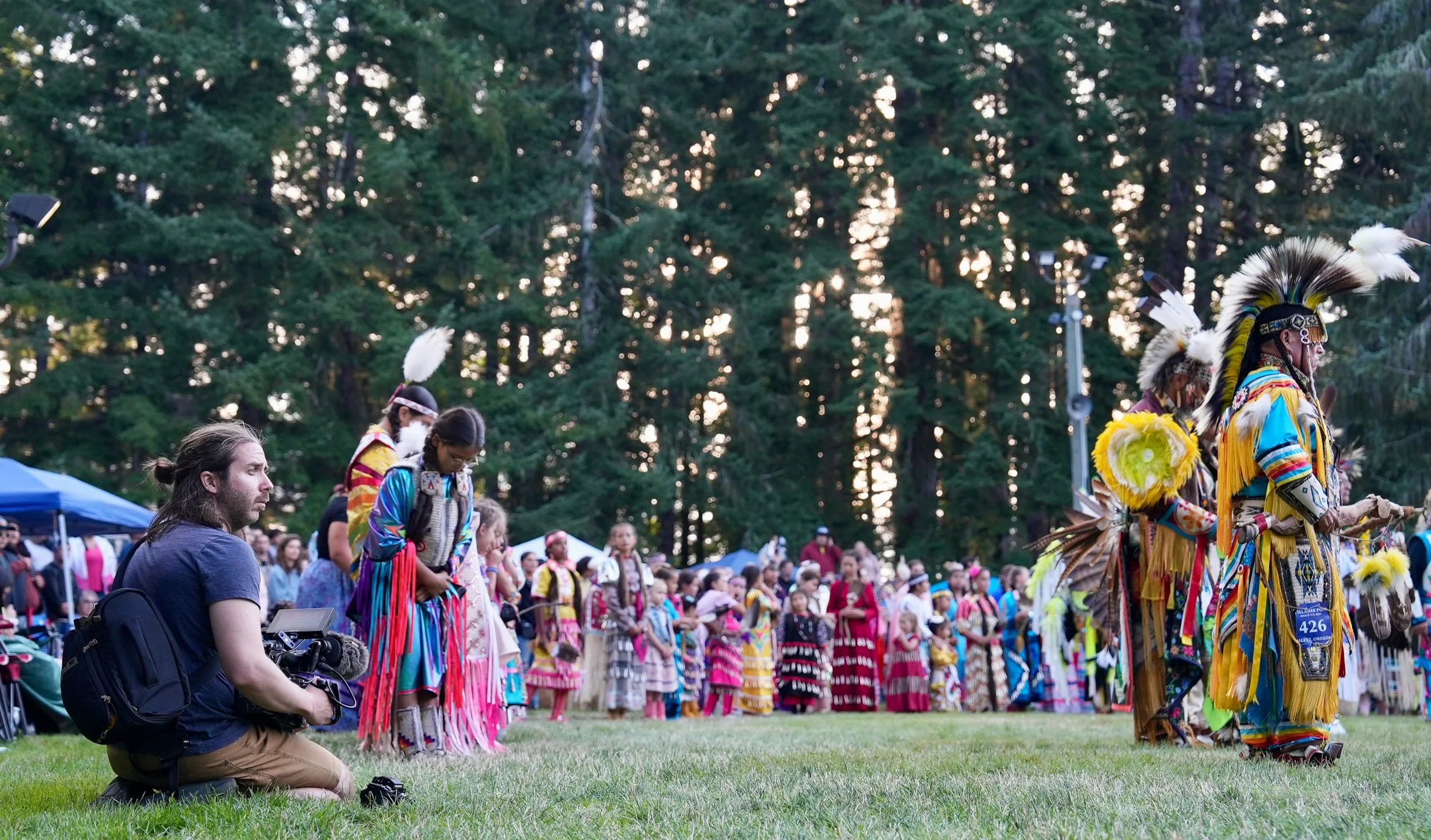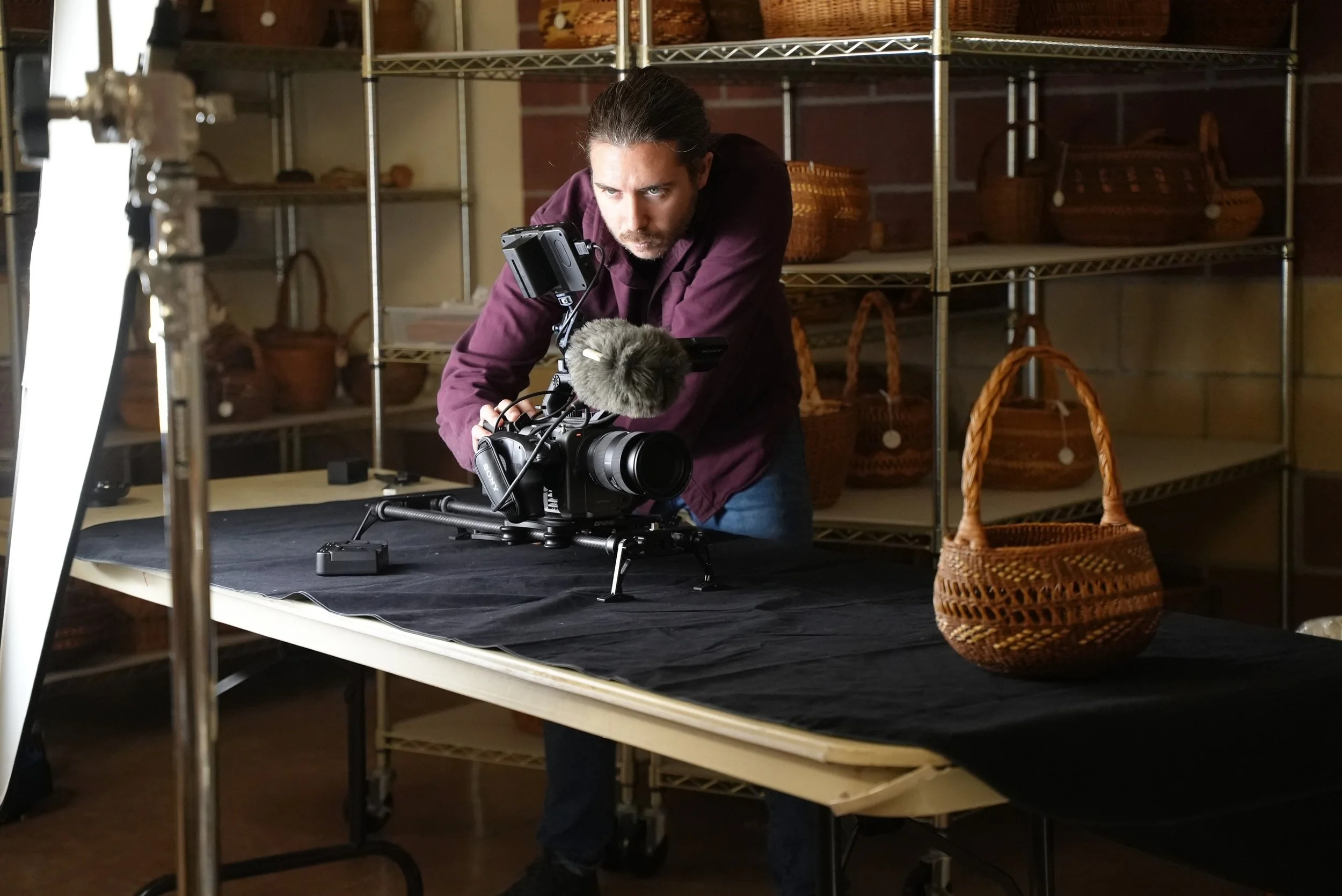Salvaging Something Sacred
Sometimes the best opportunities come from unexpected places.
Last year, right in the midst of a big transition, I almost passed on an RFP that landed in my inbox. On paper, it didn’t look like a fit—editing 360 video footage was definitely not in our wheelhouse. But something made me pause, and I’m so grateful I did.
The RFP was from the Siletz Tribal Arts and Heritage Society (STAHS), looking for help on a project they had started but couldn’t complete. A few years back, STAHS had sat down with a group of elders from the Confederated Tribes of Siletz Indians (CTSI) to record their memories of the termination era and the fight for restoration. The footage needed editing, but more than that, they needed a new plan.
I reached out to Stephanie Chamberlin, the acting director, and quickly realized they just needed help figuring out what to do next. After some back-and-forth, we put together a project proposal. I was upfront that we couldn’t promise much regarding the 360 footage, but we were committed to helping capture and preserve these vital stories.
When we finally saw the footage, it was clear it wouldn’t work: poor lighting, low resolution, and a group setting that made the subjects unrecognizable. But one thing stood out—the audio was clean, and the stories were powerful. The STAHS board had one non-negotiable: no re-interviews. These were moments they couldn’t recreate.
So, we asked ourselves: could we build a story using just the audio and find a creative visual approach to bring it to life? We bet that if we could shoot layered portraits of each elder and interweave archival footage with present-day visuals of the CTSI community, we could make it work.
Thanks to the creativity of Bailey Beltramo on new visuals and the hard work of Christopher Ward on sourcing archival footage and editing, we pulled it off. Seeing the first cut, especially when the elders spoke about passing on their heritage, was unexpectedly moving. Like I think I teared up for a second!
When I think back on it today, meeting these incredible people in person, after hours of listening to just their voices, was so powerful. Seeing their strength during the portrait shoot, as they stood proudly without speaking, made it clear how much these stories matter. Moments with Ed Ben, sharing firsthand how he and his father fought to preserve the tribe, and Buddy Lane Jr., discussing the systematic reduction of reserved land, deepened our respect and understanding of the community.
Being part of this project changed our team. We learned so much from our new friends at STAHS and CTSI and were humbled by their generosity in sharing their stories. It challenged our perspectives on how Native communities in Oregon have been treated—and how they continue to fight for recognition and respect.
We’re honored to have been part of this project and are grateful to Stephanie, Gloria Ingle, Gerald Ben, and the whole STAHS team. We can’t wait to see what opportunities come next.
If you’re curious to learn more, check out the full film here: Termination Era Film.

